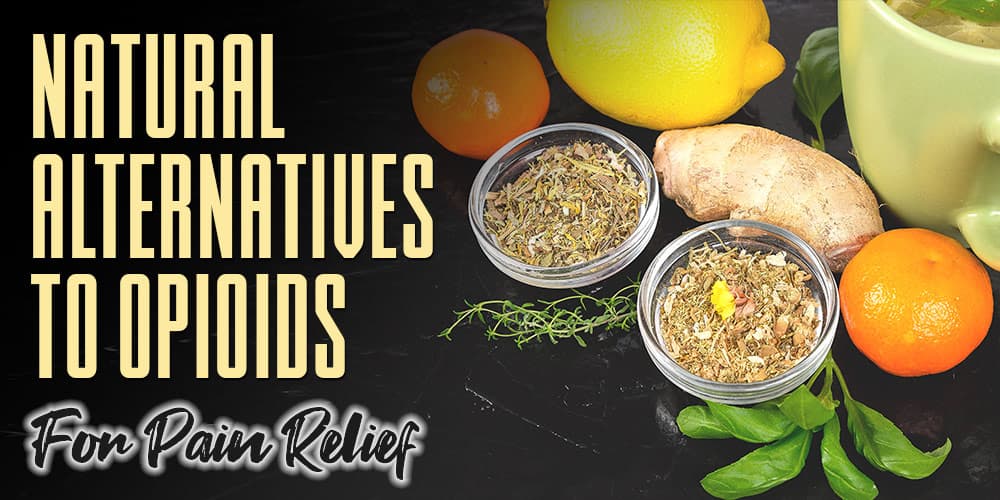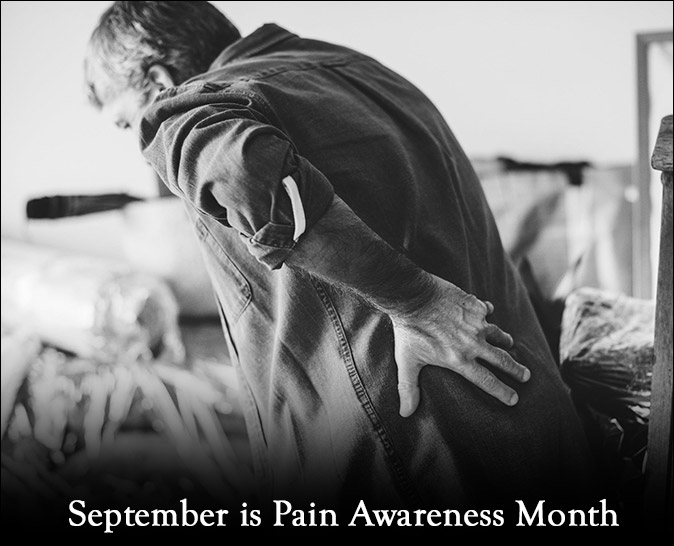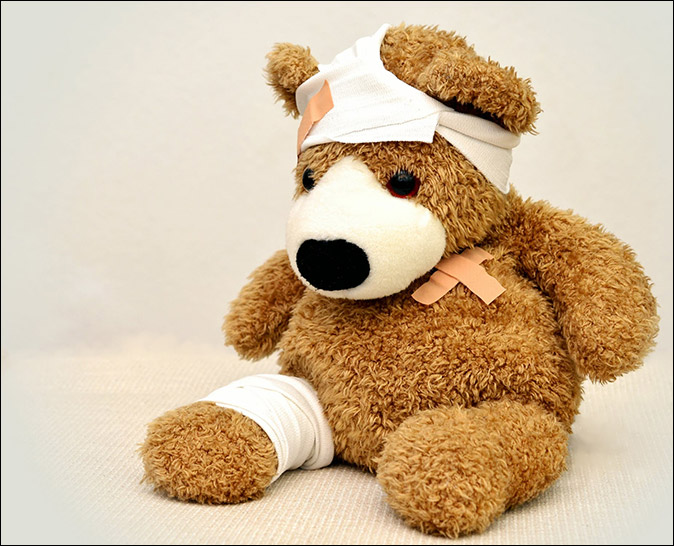
The worrying trend toward both prescribed and illegal opioid use in the United States requires serious action.
As many as 130 people die every day in the U.S. due to overdosing on opioids, and the U.S. government has rightly called the opioid epidemic a “national public-health emergency.”
Millions are becoming addicted to painkillers and drug overdose is now the leading cause of death for people under the age of 50.
Since 2001, September has been recognized as Pain Awareness Month and it’s important we all understand how chronic pain can affect our daily lives.
There are many causes of pain such as trauma, injury, inflammation, infection, fever, disease or neurological disorders. To keep functioning in society, people often turn to painkillers, drugs or alcohol as a source of relief.
While pain medication can be useful for many, some are negatively impacted by a reliance to this form of treatment and it can eventually spiral out of control.

In recognition of Pain Awareness Month, we’ll examine the effects of opioid use and dependence, scientific evidence that shows how opioid dependence can lead to antibiotic resistant infection, and natural alternatives to opioid painkillers that can provide long-term pain relief.
Opioid Misuse and Side Effects
Opioids, also known as narcotics, are drugs that can be either man-made or synthetic. People commonly use opioids to relieve pain, either legally prescribed by a doctor or illegally obtained from others.
The most familiar opioid pain relievers include:
- Oxycodone (OxyContin)
- Hydrocodone (Vicodin, Lortab, Norco)
- Tramadol
- Morphine
- Codeine
- Heroin
- Fentanyl
The Centers for Disease Control and Prevention (CDC) estimates the economic burden of opioid misuse costs the economy $78.5 billion every year.
This spending is spread across addiction treatment, criminal justice, lost productivity and healthcare.
The highly addictive nature of all forms of opioid pain relievers was underestimated in the 90s and has resulted in the explosion of both illegal and prescription use of painkillers in the U.S. today.
Nearly 80% of opioid users experience some form of side effect, with mild side effects ranging from itching and dizziness to nausea and constipation. Normal opioid use can also affect the respiratory system, the heart and even result in fatalities.
Signs of an Opioid Overdose
It’s important to be able to recognize the signs of an overdose, and to know when it’s time to call 911.
Here are common signs that a person is suffering from a drug or opioid overdose:
- Pale face
- Cold or clammy skin
- Limp body
- Blue or purple fingernails or lips
- Vomiting or making gurgling noises
- Unable to speak
- Shallow breathing or heartbeat that slows or stops
Superbug Linked to Increased Opioid Use
A new study presented at the American Society for Microbiology (ASM) in San Francisco, California found that opioid use was linked to a 13-fold increase in heart infections. The study highlighted that the increase in infections was primarily due to the superbug staphylococcus aureus.
Staphylococcus aureus is a round-shaped bacterium that is resistant to antibiotics. An overgrowth of staphylococcus aureus can cause serious irreparable damage to the heart.
Microbiologist Cecilia Thompson at the University of North Carolina who presented the study to the ASM has been sequencing DNA from heart valves in people who were undergoing surgery to replace damaged heart valves. She found that heart valves taken from people who injected drugs were more likely to be infected.
Previous animal studies have shown a direct correlation between morphine dependence and the spread of viruses. Thompson and her team are using next-generation sequencing techniques to pinpoint infections caused by opioids to identify the exact pathogens involved.
The spread of infection has a lot to do with unsafe injection practices leading to a spike in new cases of HIV, however injectable opioids are only part of the story. The stigma around the overuse of opioids (especially “illegal” opioids) can stop people from seeking early treatment to prevent the spread of infection.
Opioids like morphine can suppress the immune system, making users more susceptible to disease. It’s not just unsafe injectable opioids that we need to be aware of though. One animal study showed that it was the opioids themselves that were suppressing the immune system.
A report in Nature magazine stated, “Opioids themselves – rather than the method used to inject them – could also be making people more susceptible to infection.”

7 Natural Ways to Overcome Pain / Non Narcotic Pain Meds
It’s helpful for everyone to focus on natural approaches to overcoming pain, whenever possible. Holistic approaches to pain relief are not just better for the body, but they also form the backbone of recovery.
For those who have experienced a dependence to painkillers, rebuilding life after opioid addiction can be difficult considering everything to overcome such as trauma, social situations and emotions.
Learning to incorporate some of the following activities will provide long-lasting pain relief while enhancing overall quality of life.
Endorphins are the body’s naturally occurring opioids that are released from the brain and central nervous system under certain conditions. The following activities help the pituitary gland secrete natural endorphins and relax the body.
1. Exercise to Reduce Pain
Running is one of the best natural methods for promoting the release of endorphins. Joggers call this feeling a “runners high” caused by the body’s natural painkilling endorphins produced while running.
But running isn’t the only exercise that works. Walking or any type of exercise for as little as 20 minutes a day will release endorphins that naturally relieve pain in the body.
2. Meditation
Meditation has been scientifically proven to have powerful healing effects on the mind and body.
At Alo House Recovery Centers we offer Dzogchen Meditation, a form of Tibetan meditation passed down from the Dalai Lama, and Kriya Yoga (popularized by Paramahansa Yogananda), which focuses on the breath. Both practices bring about a profound state of tranquility.
3. Yoga
Yoga is very complementary to meditation and we offer it to our clients at Alo House even if they have never tried it before. It is something that works well during recovery and it can be practiced for a lifetime.
Yoga triggers the body’s endorphin system as well as strengthening the body’s response to stress and discomfort.
4. Acupuncture
It is well known that acupuncture can help to relieve pain in the body and has been gaining popularity for the past few decades.
The benefits of acupuncture are achieved by clearing blockages in the body and releasing endorphins to defeat pain.
5. Mindfulness
Guided mindfulness practice helps the mind relax and return or remain the present moment.
By relaxing the mind and staying focused on the current task at hand, the entire body enters a state of calm thereby reducing tension and minimizing any associated pain.
6. Magnesium
Relaxing in a bath of Epsom salts allows the body to absorb magnesium. Both Epsom salts and magnesium supplements relax the body and can even be used during surgery to reduce pain and relax muscles.
7. Neurofeedback
Self-regulation of brain waves helps improve the mind’s focus and neurofeedback provides a way to see a person’s brain waves in action on a screen.
Neurofeedback rewards the brain for desirable behavior, and over time, helps a person remain in an optimal state to overcome stress, depression, headaches, and other sources that stimulate pain in the body.
Finding ways to relieve pain naturally is an important goal for Pain Awareness Month in September. Hopefully some of these suggestions will offer relief for those who live with pain on a daily basis without relying on opioids or other substances as coping mechanisms.
Related Posts
- 46 Movies About Drugs, Addiction and Alcoholism
Movies about drugs, addiction and alcoholism can be hard-hitting and even triggering for some people.…
- Signs Of Addiction To Watch For
Addiction is a serious disease and it is imperative for it to be regarded as…
- 8 Famous People Who Kicked Their Cocaine Addiction
People are often influenced by the rich and famous, and sadly that can mean normalizing…
